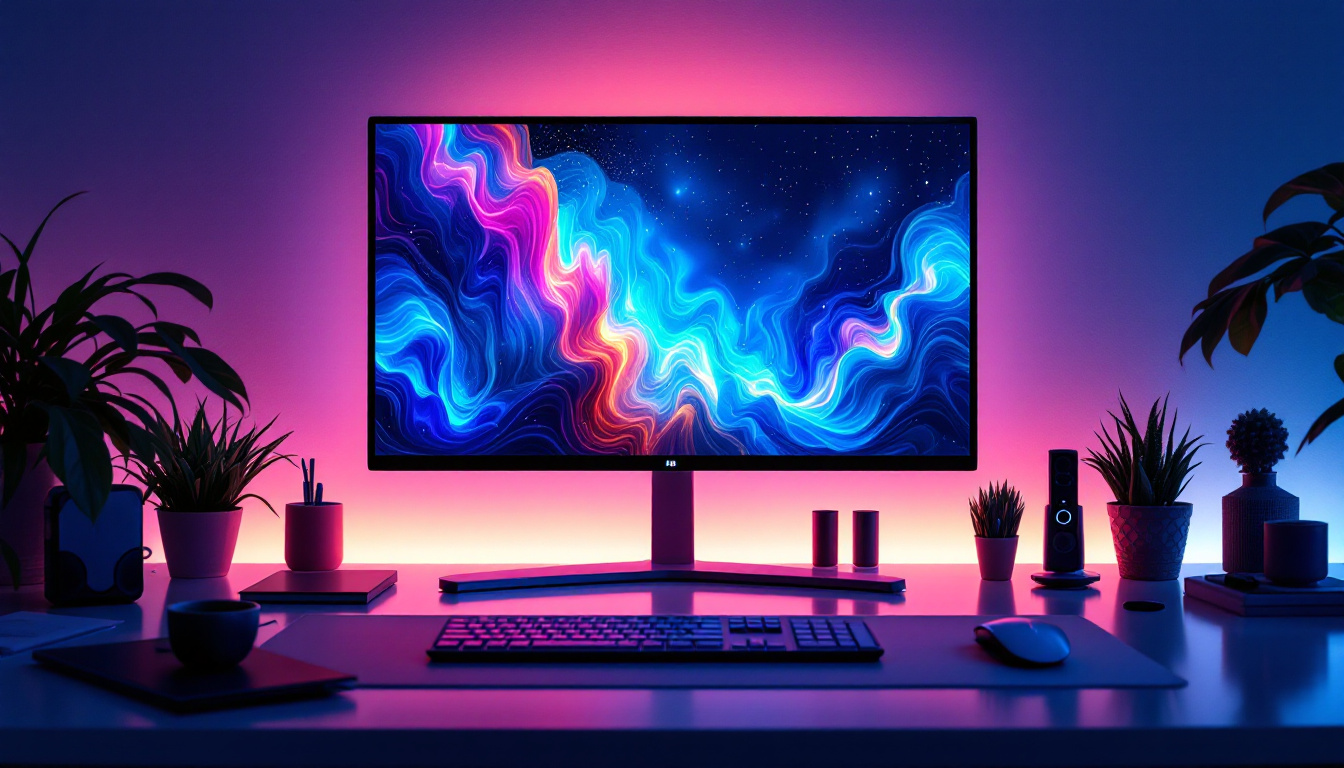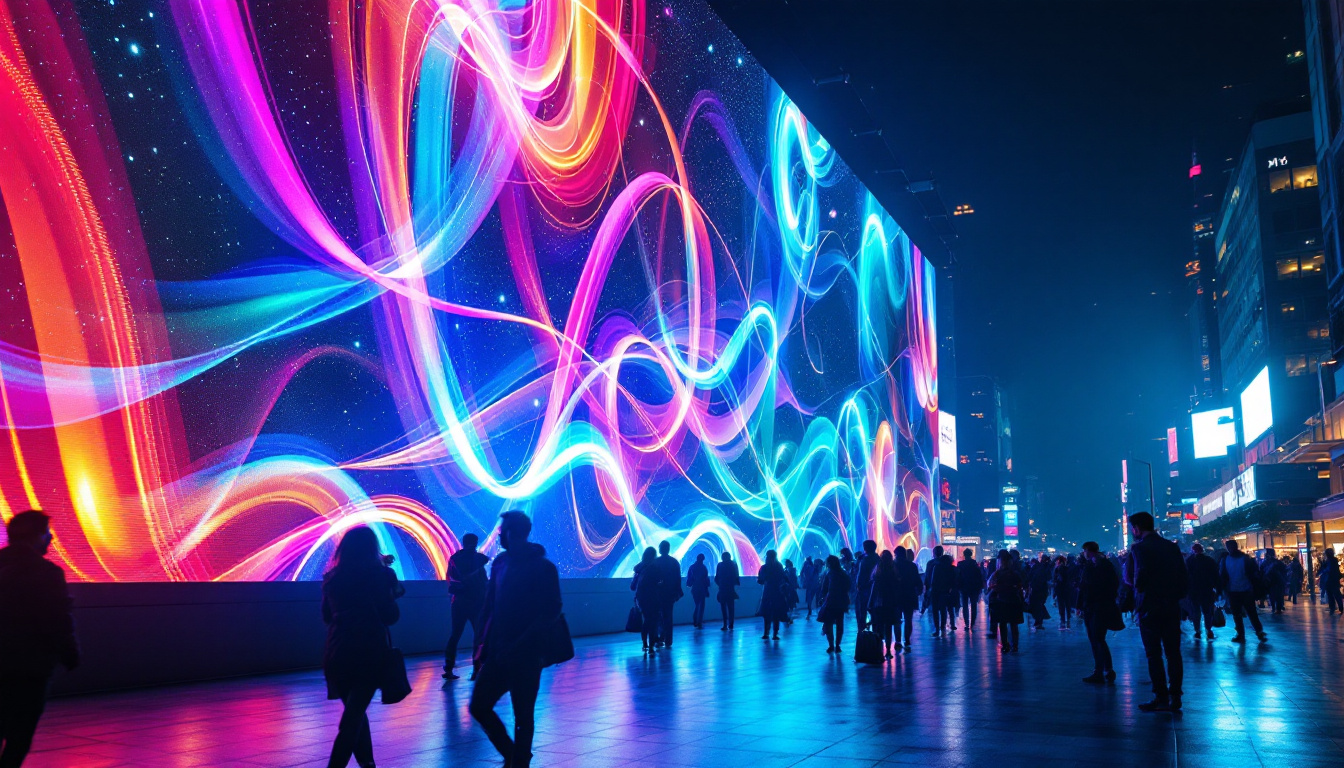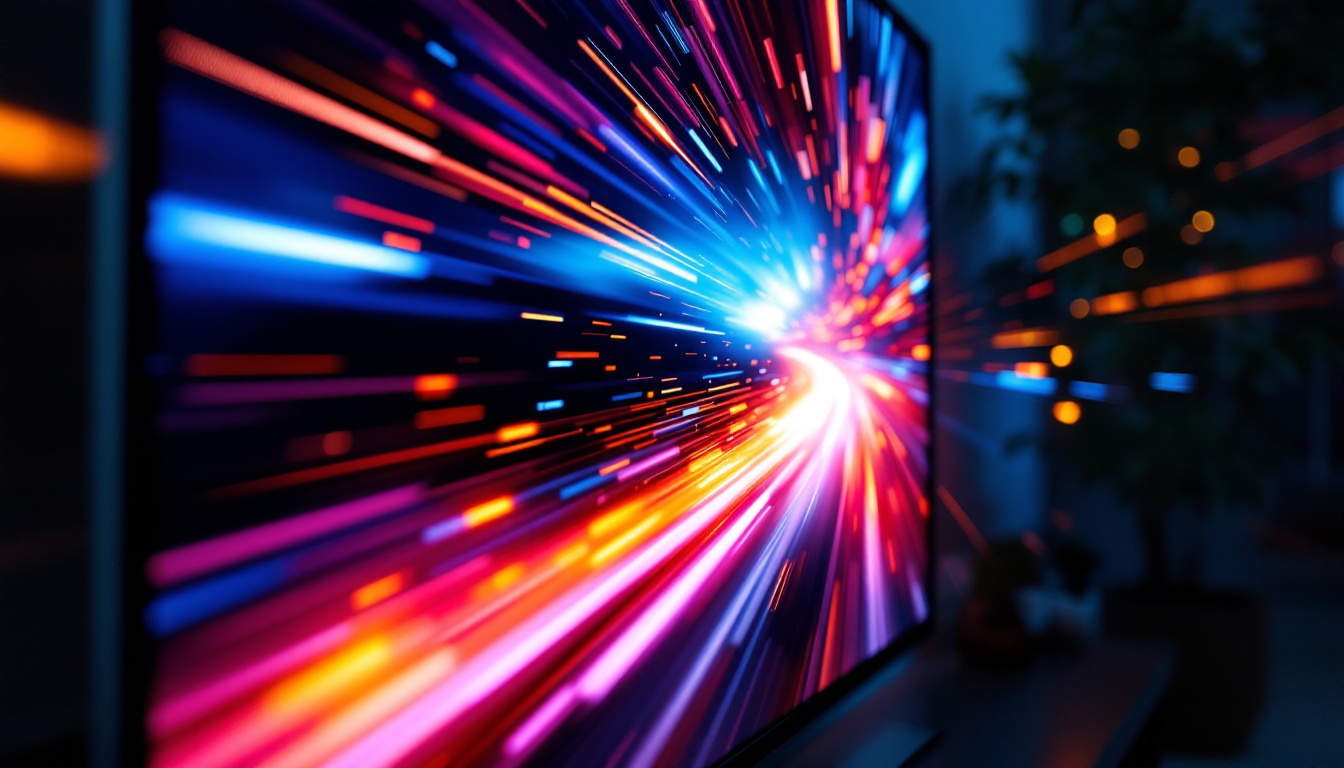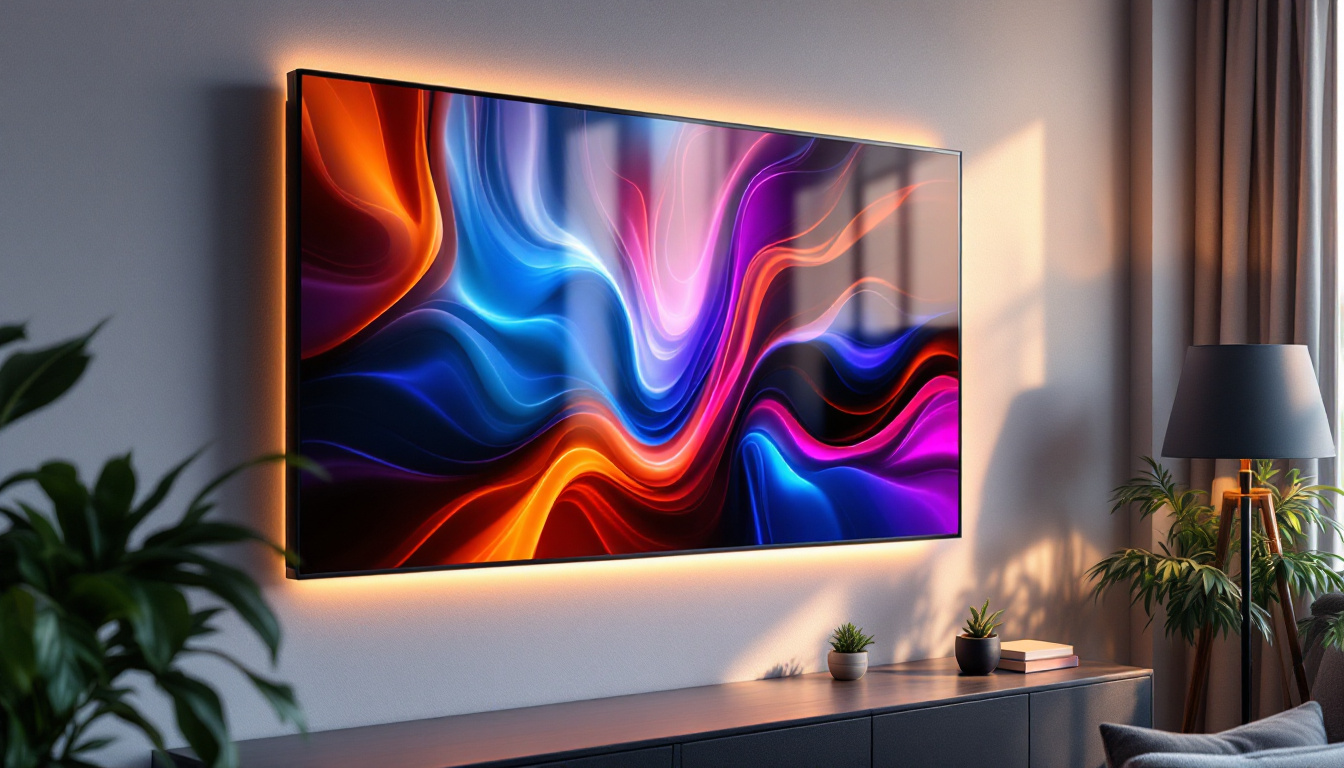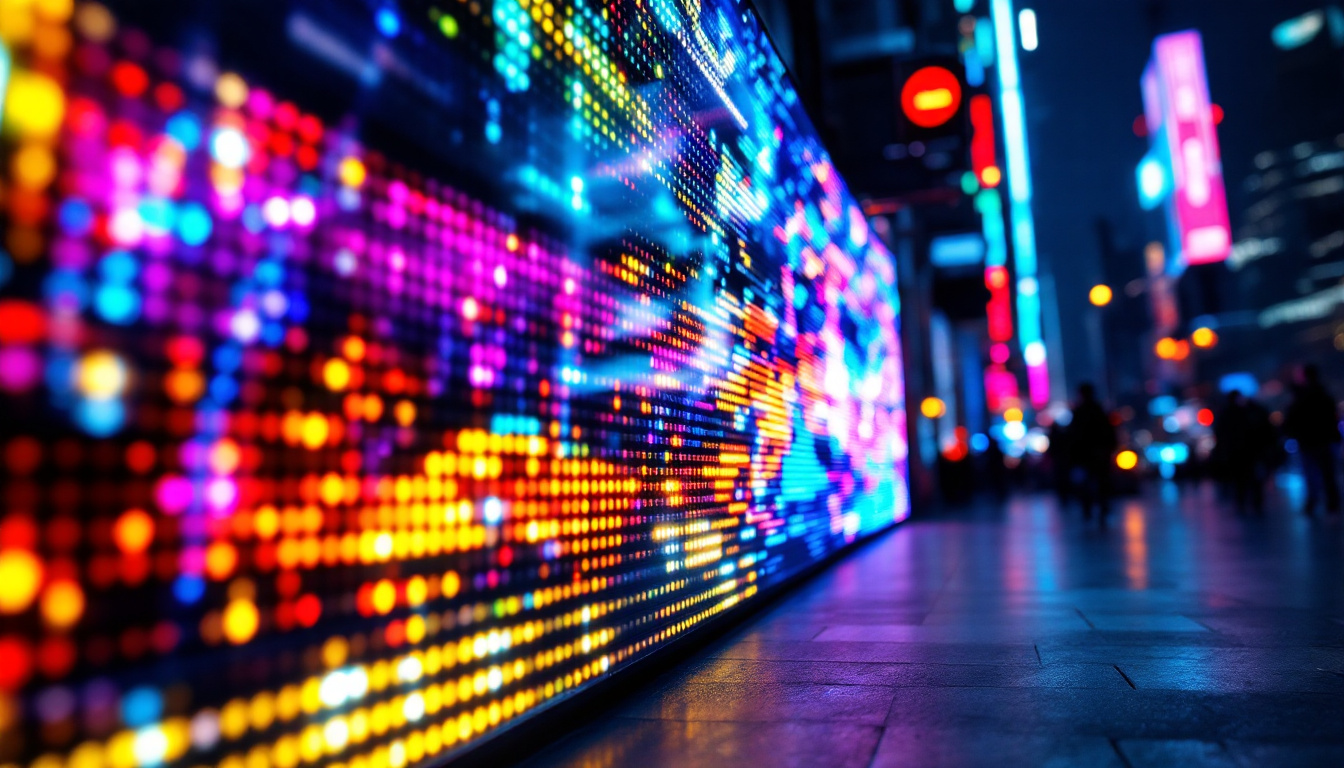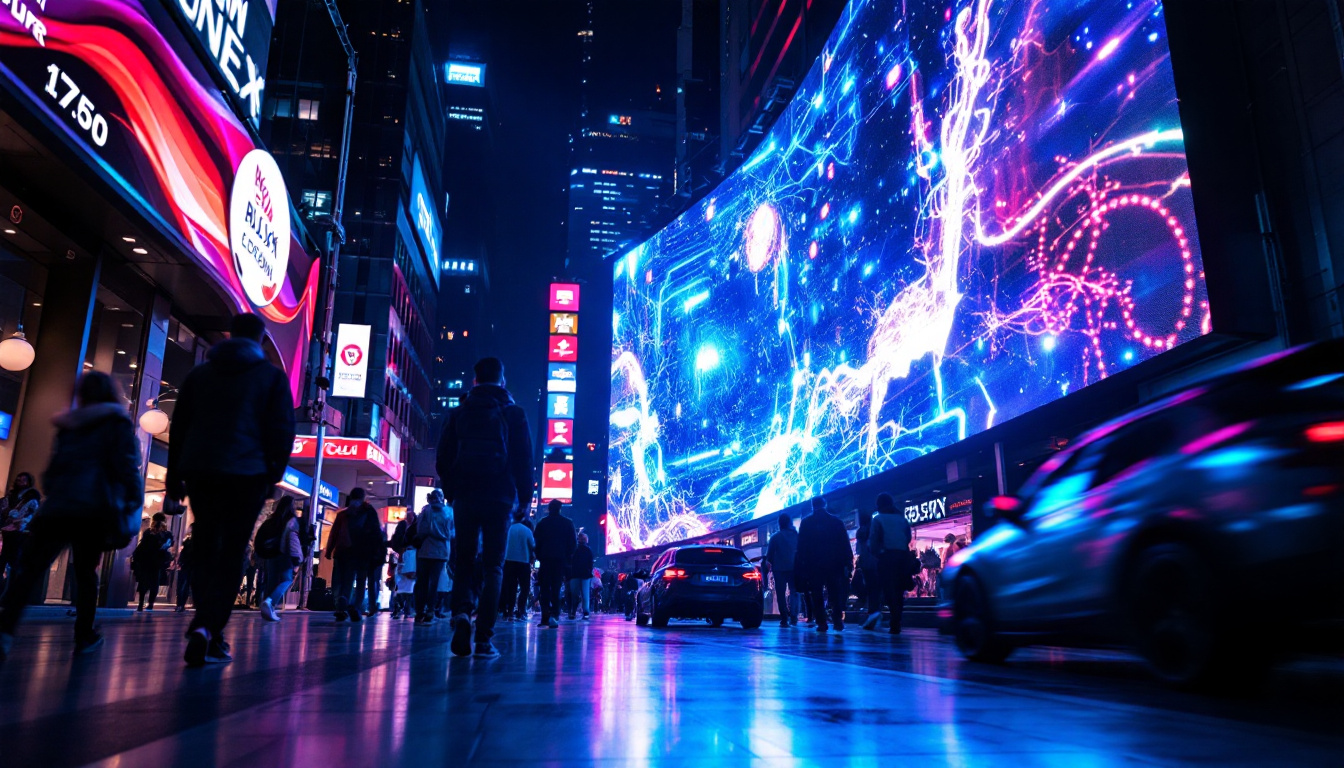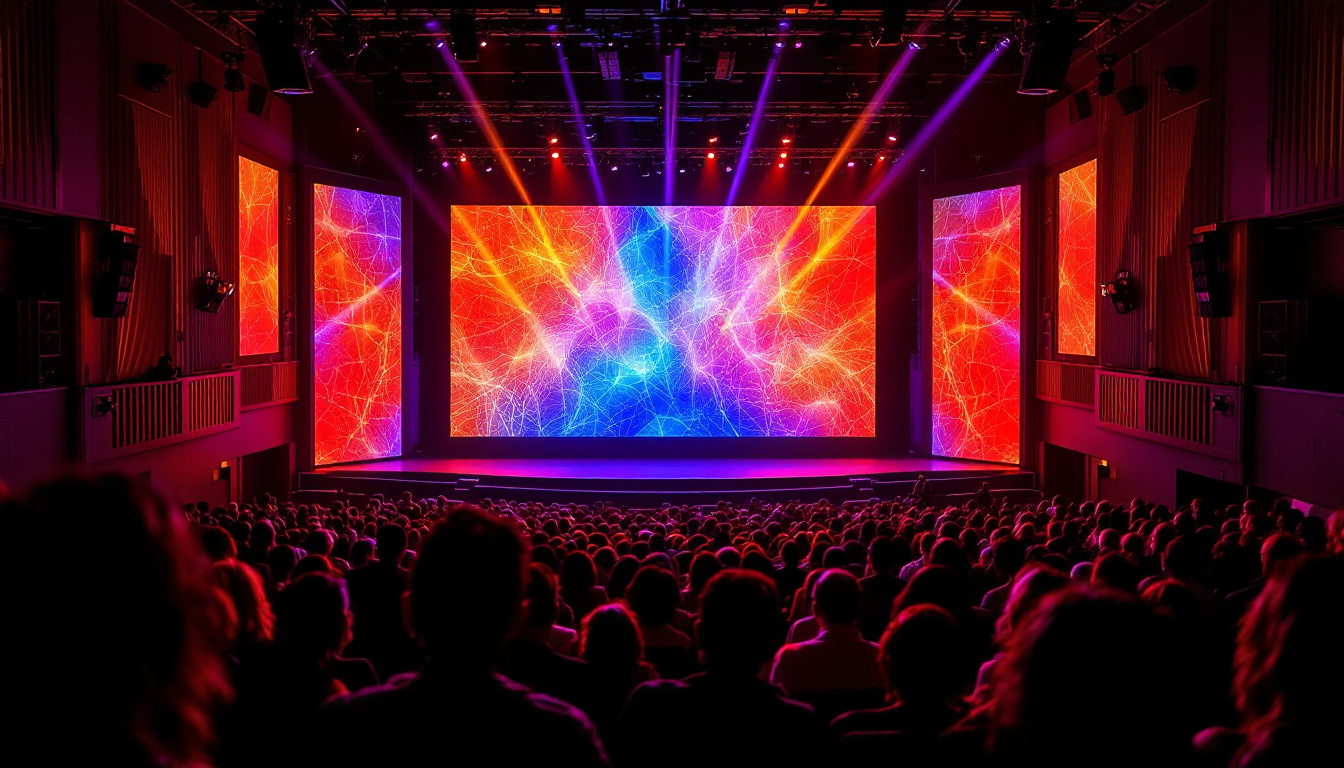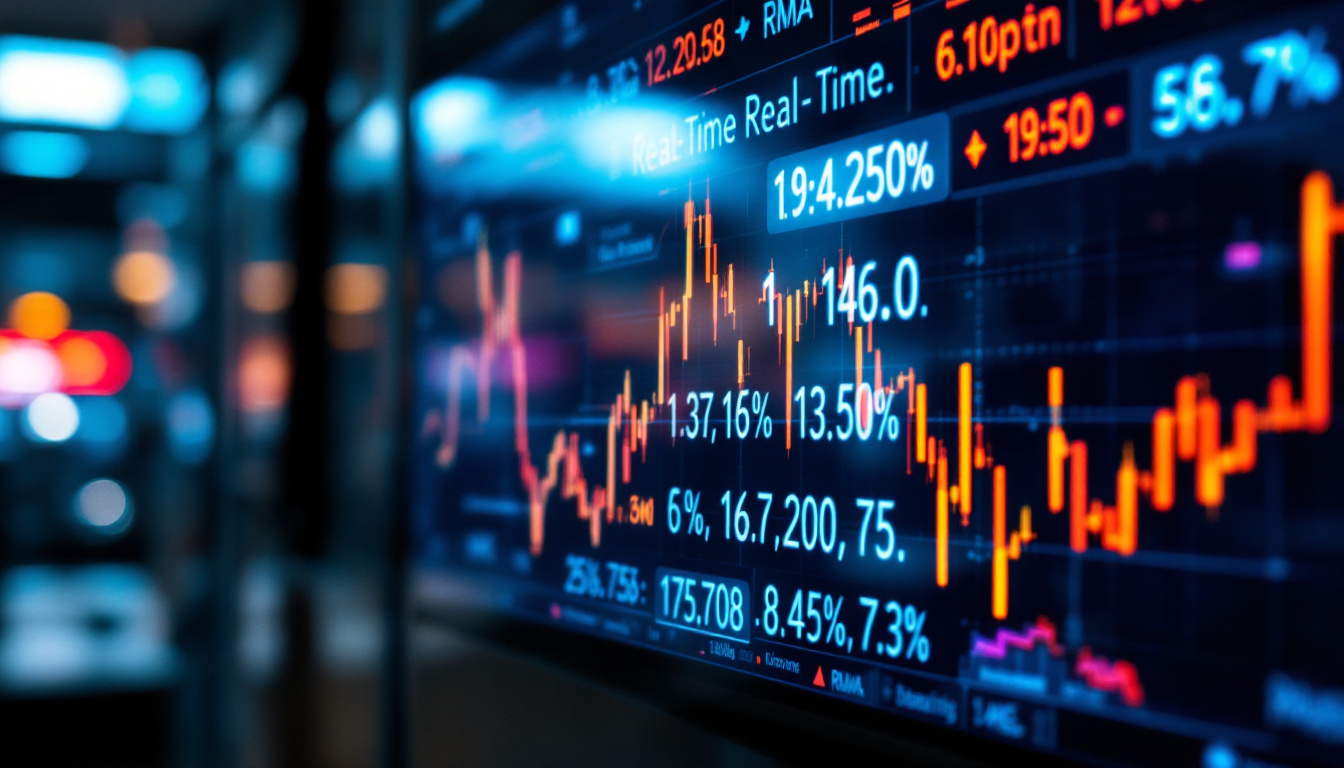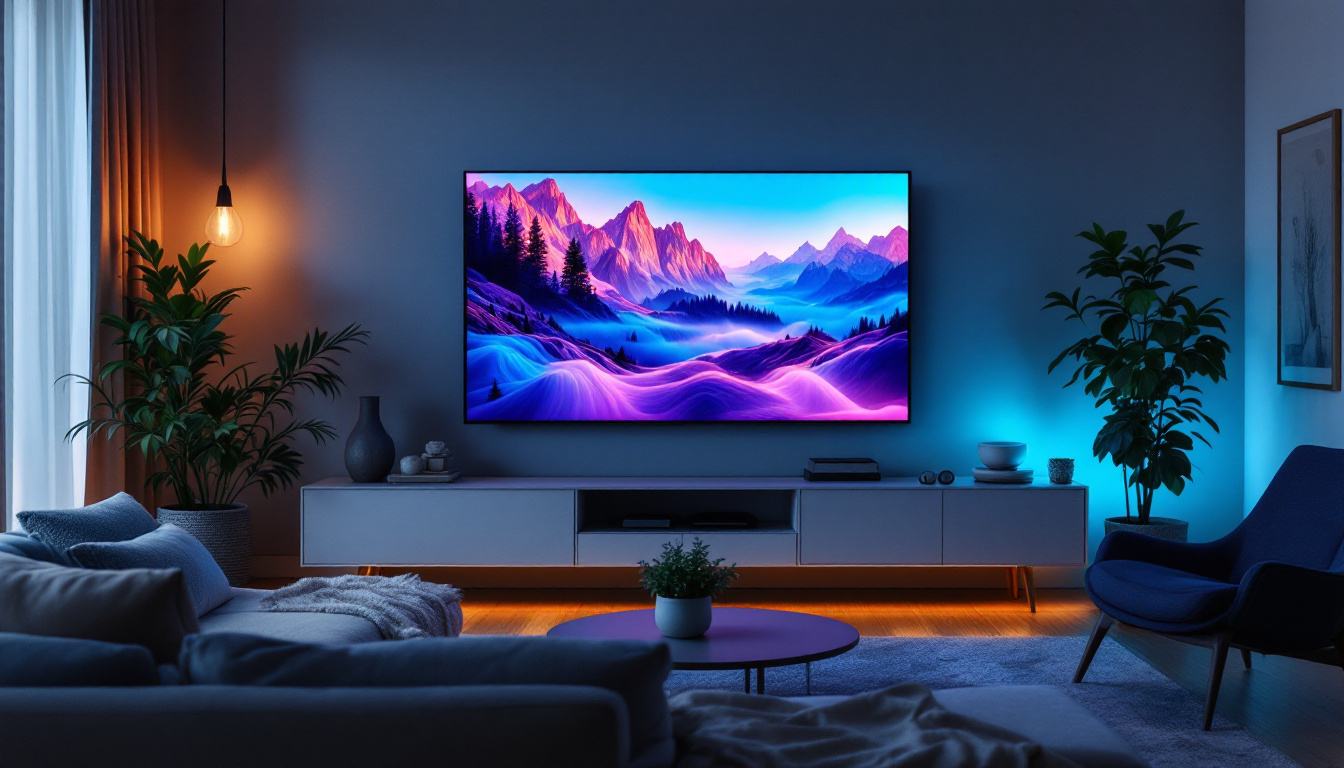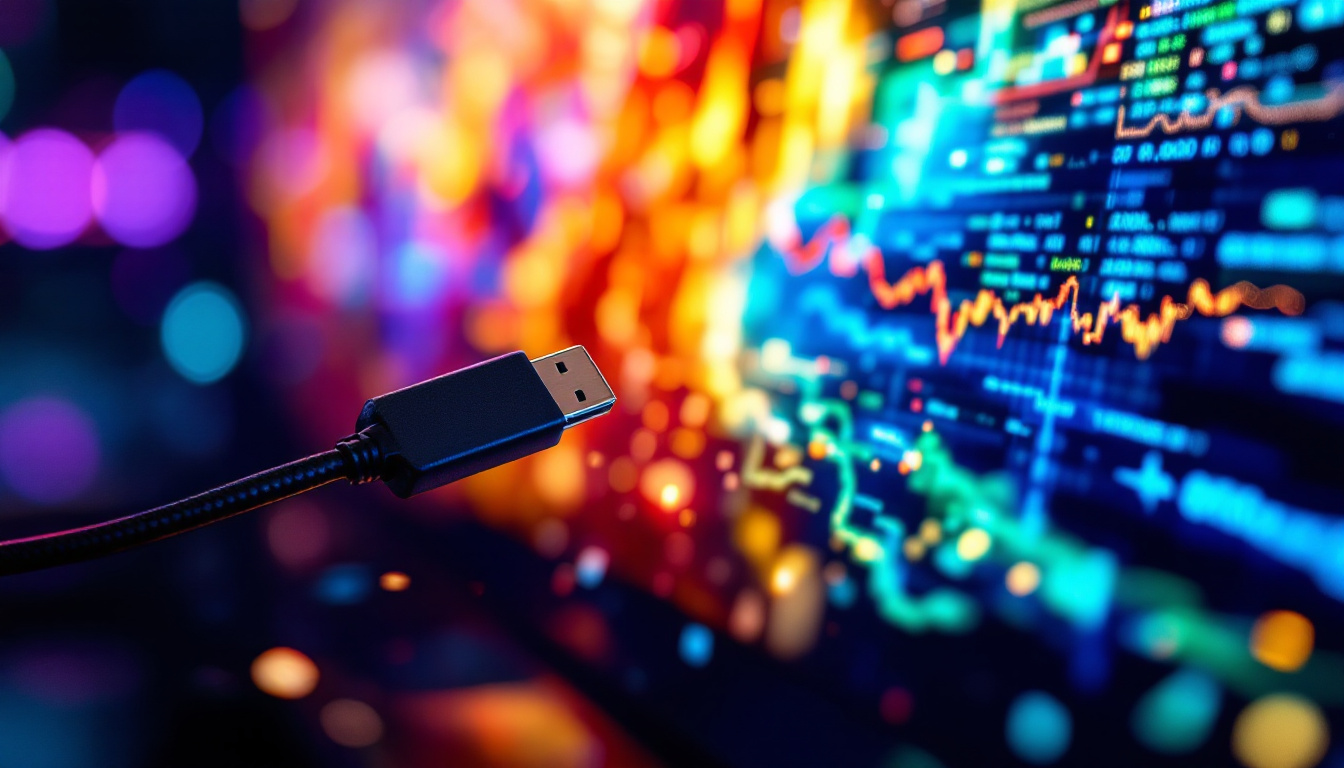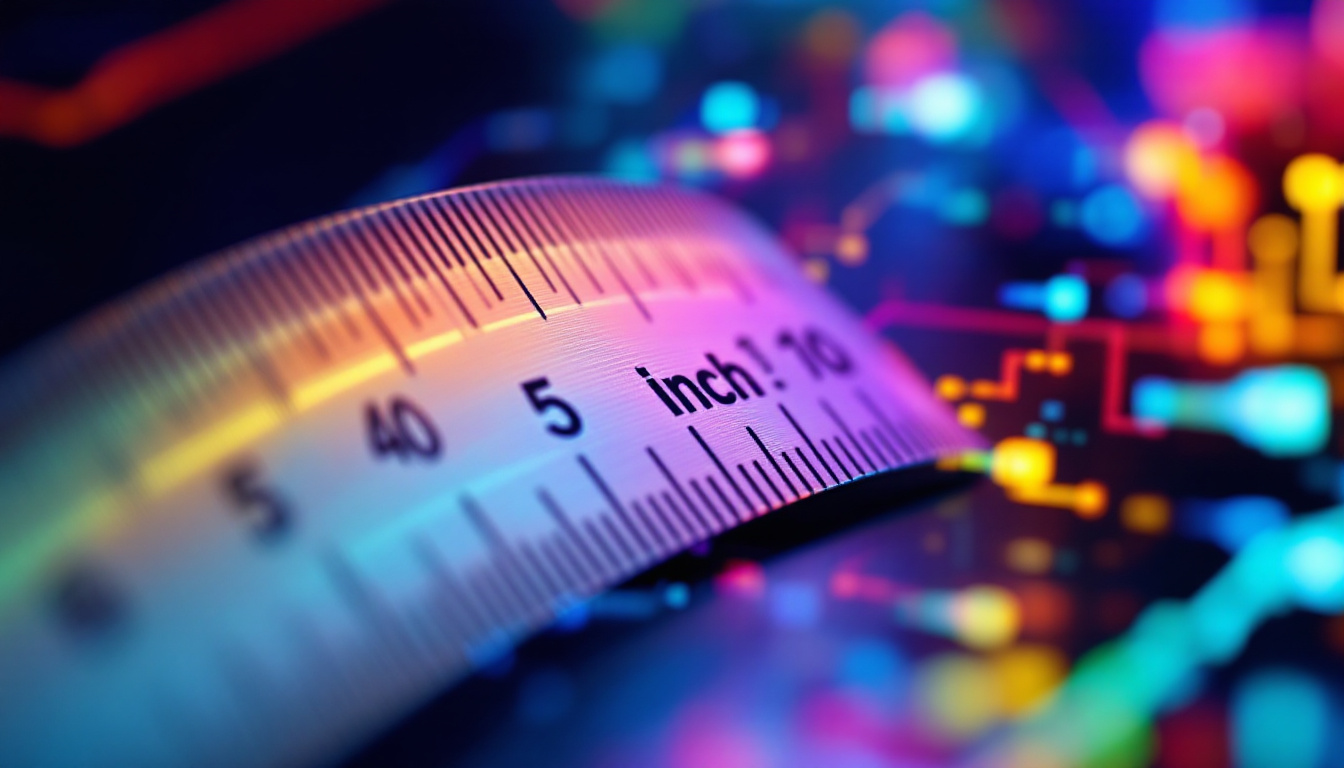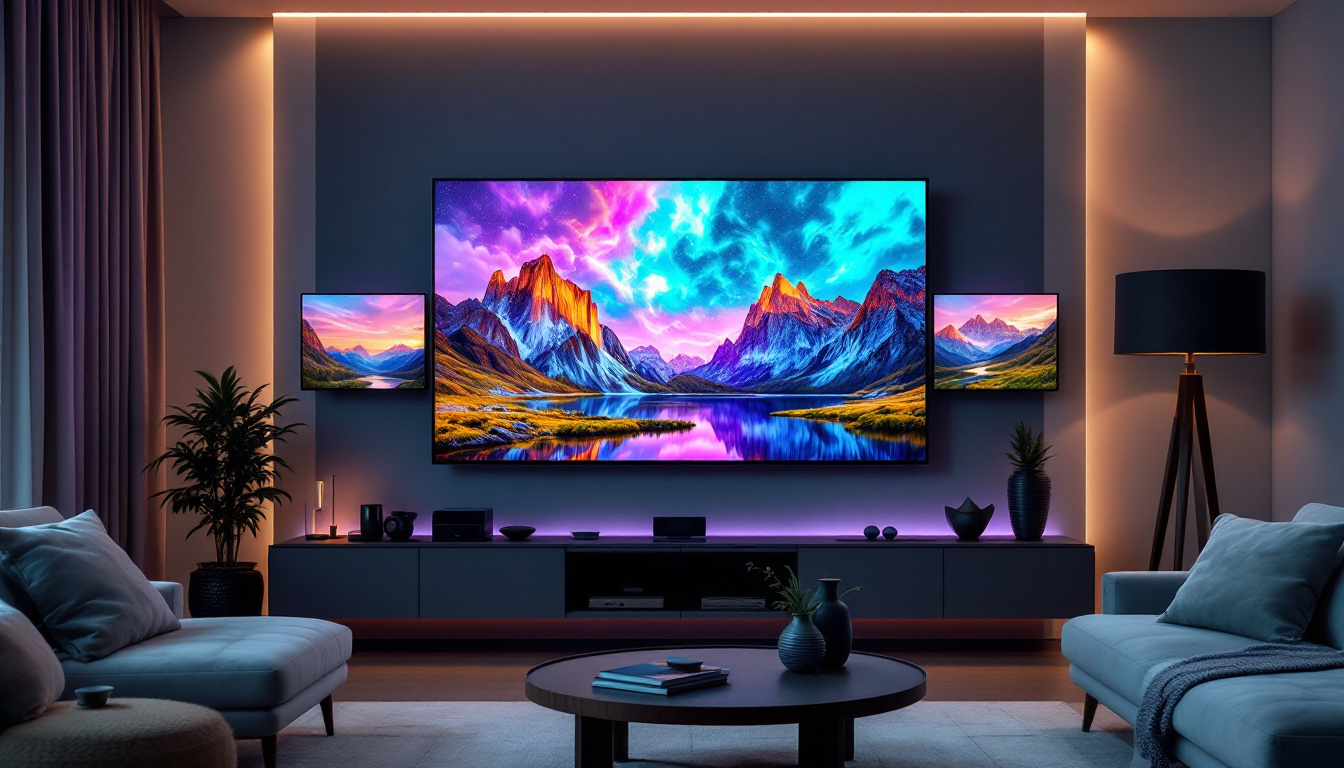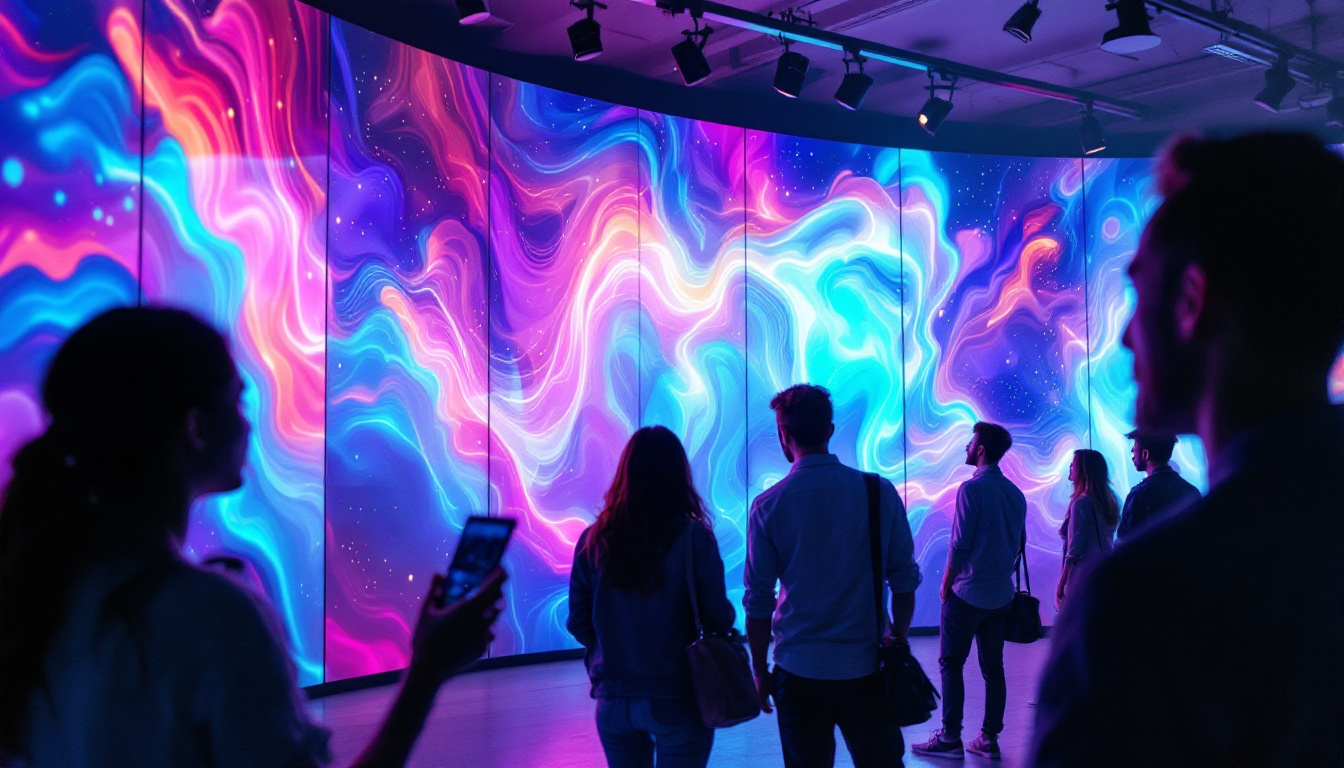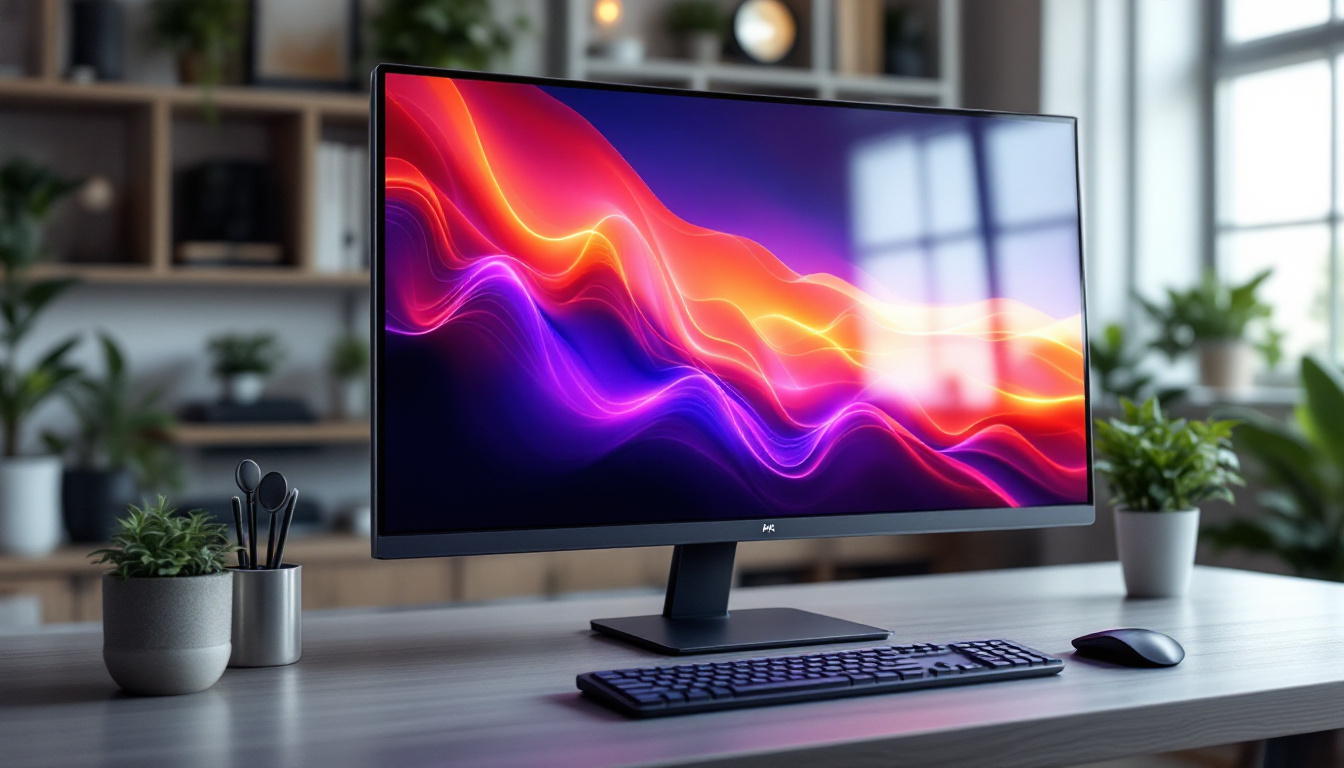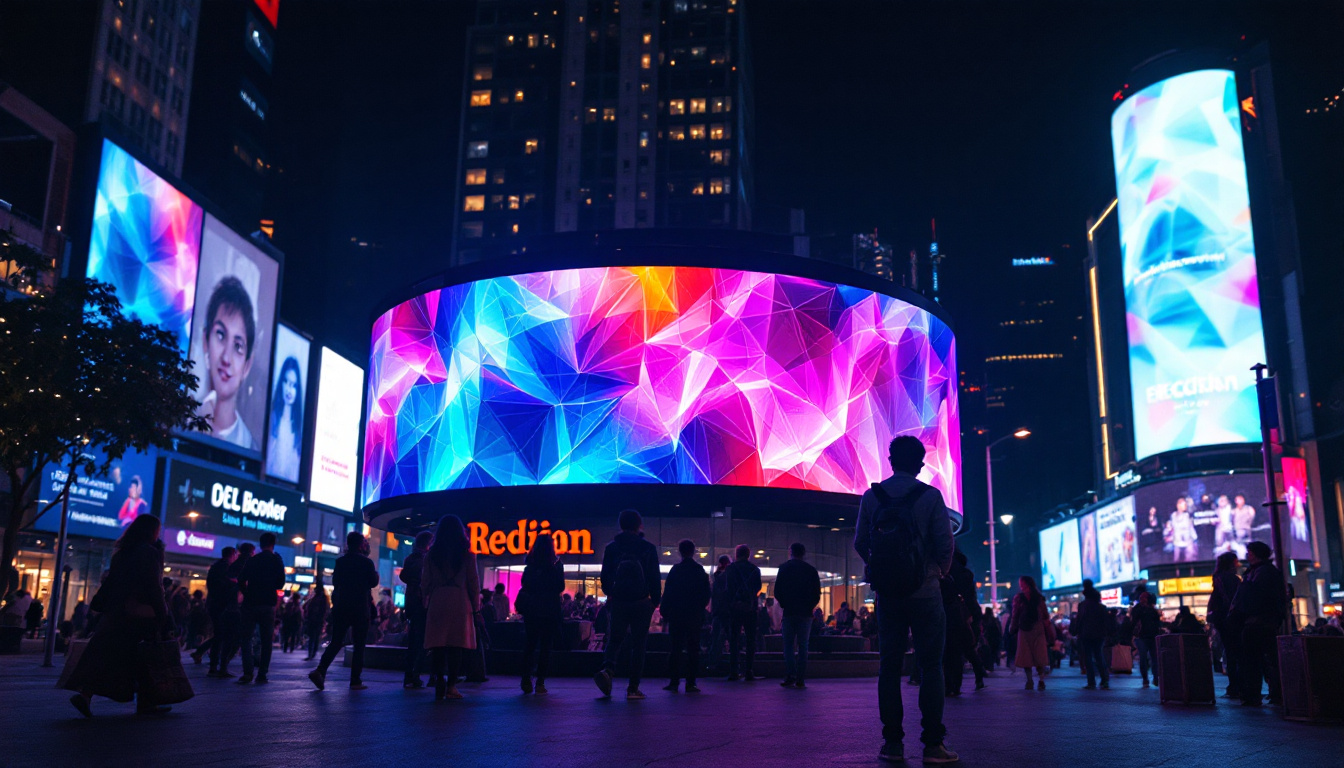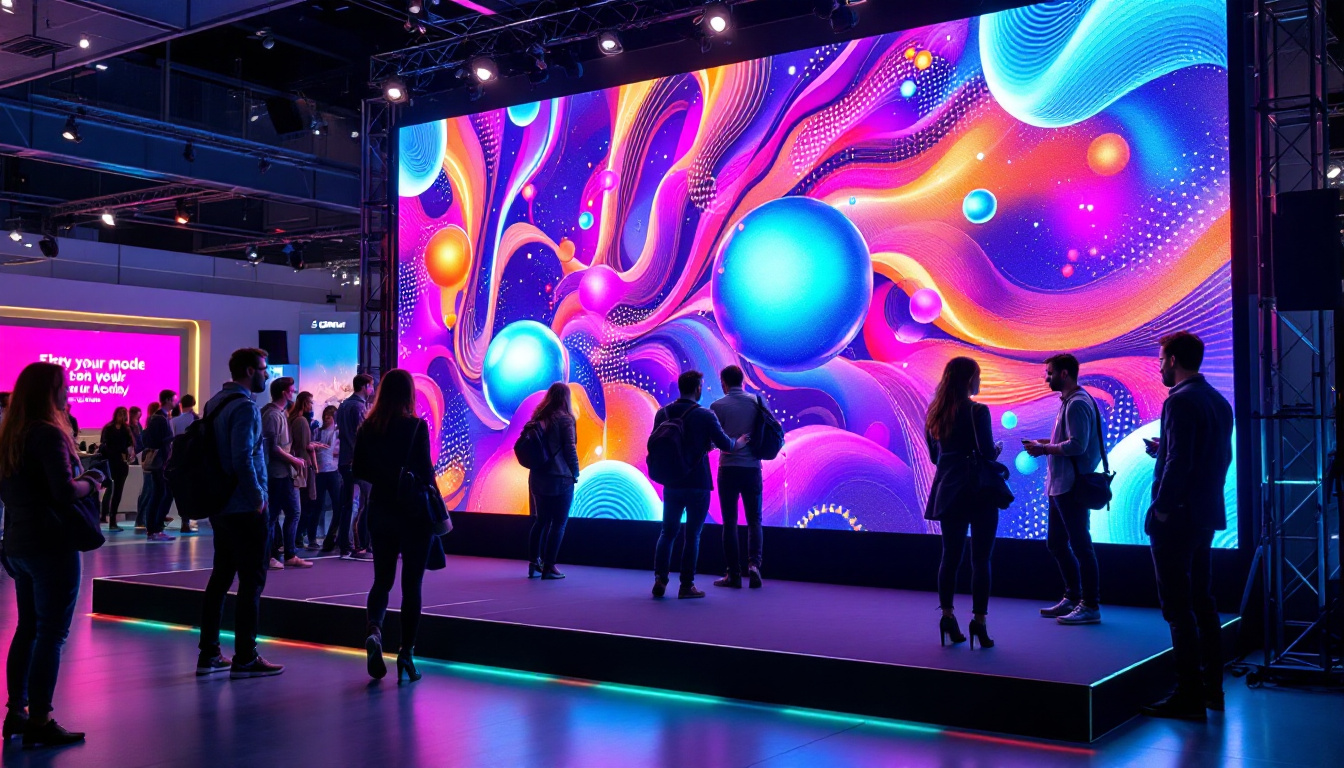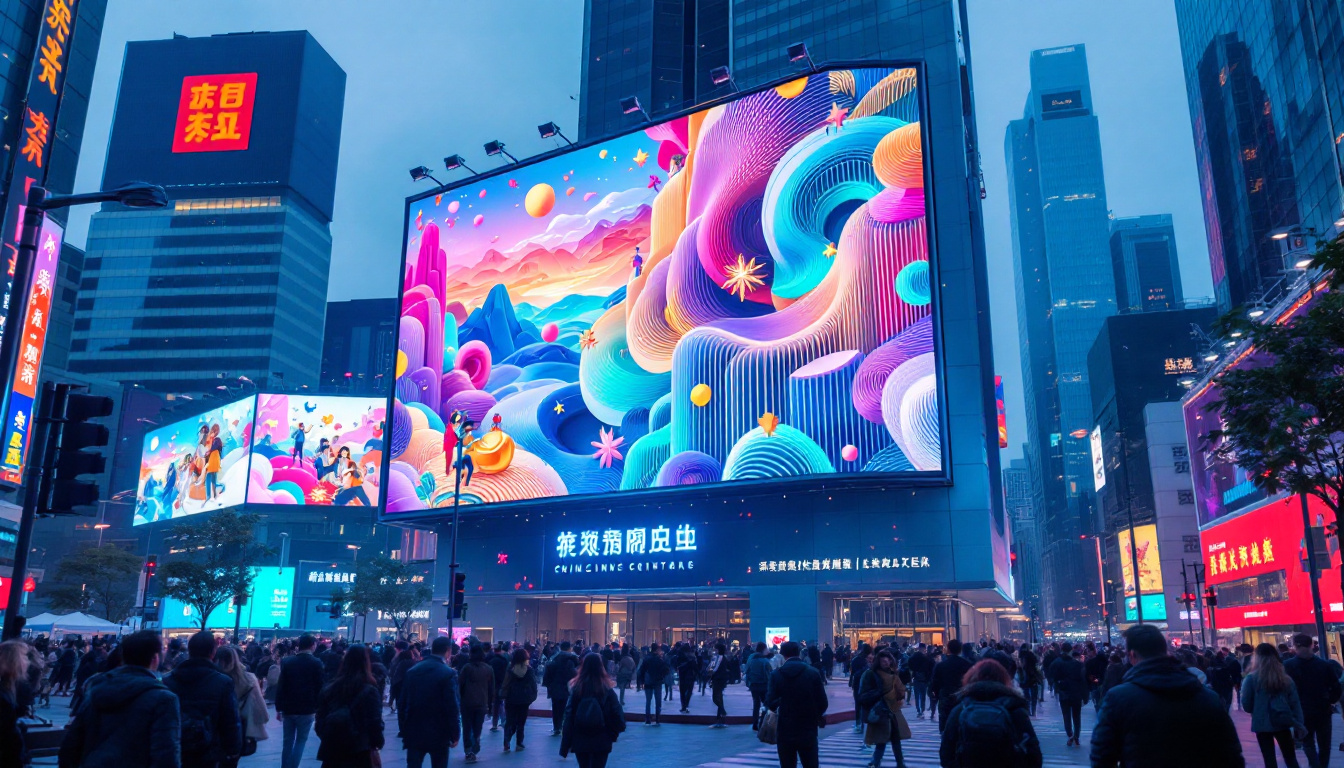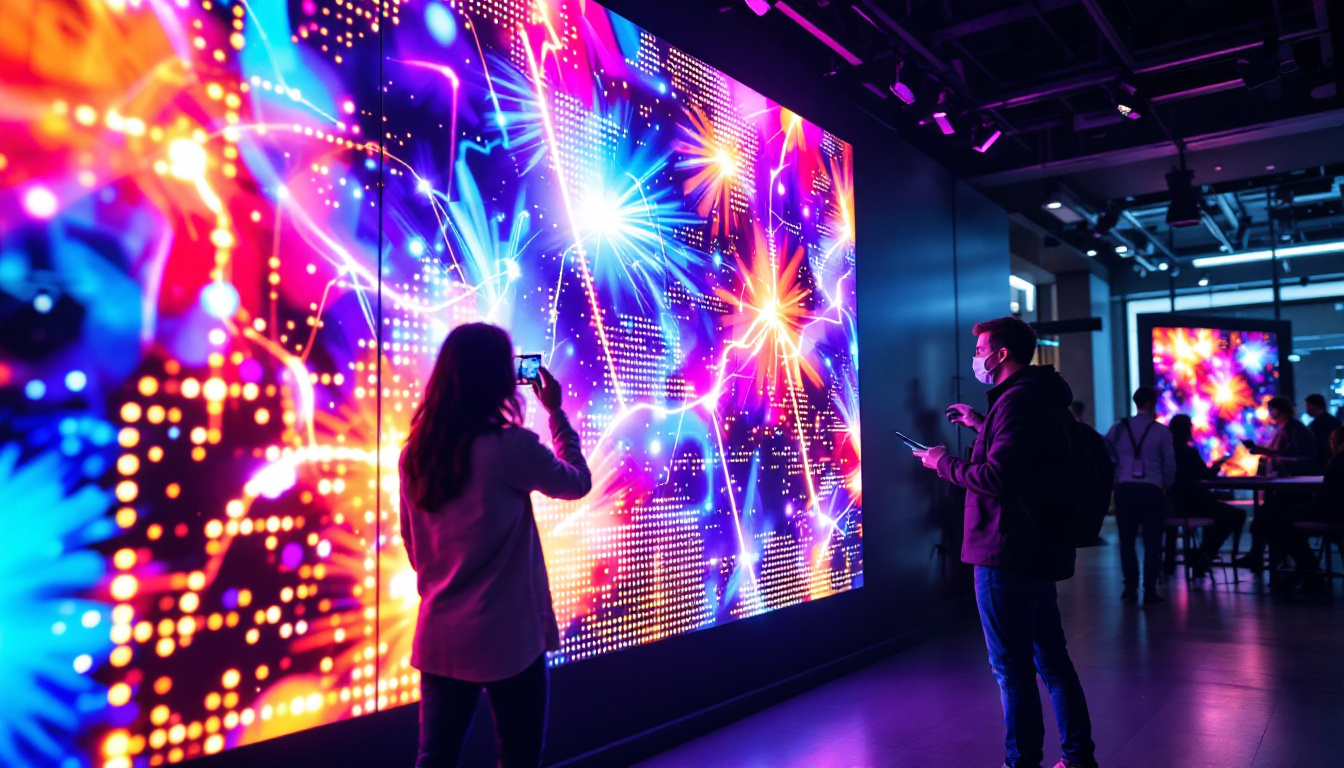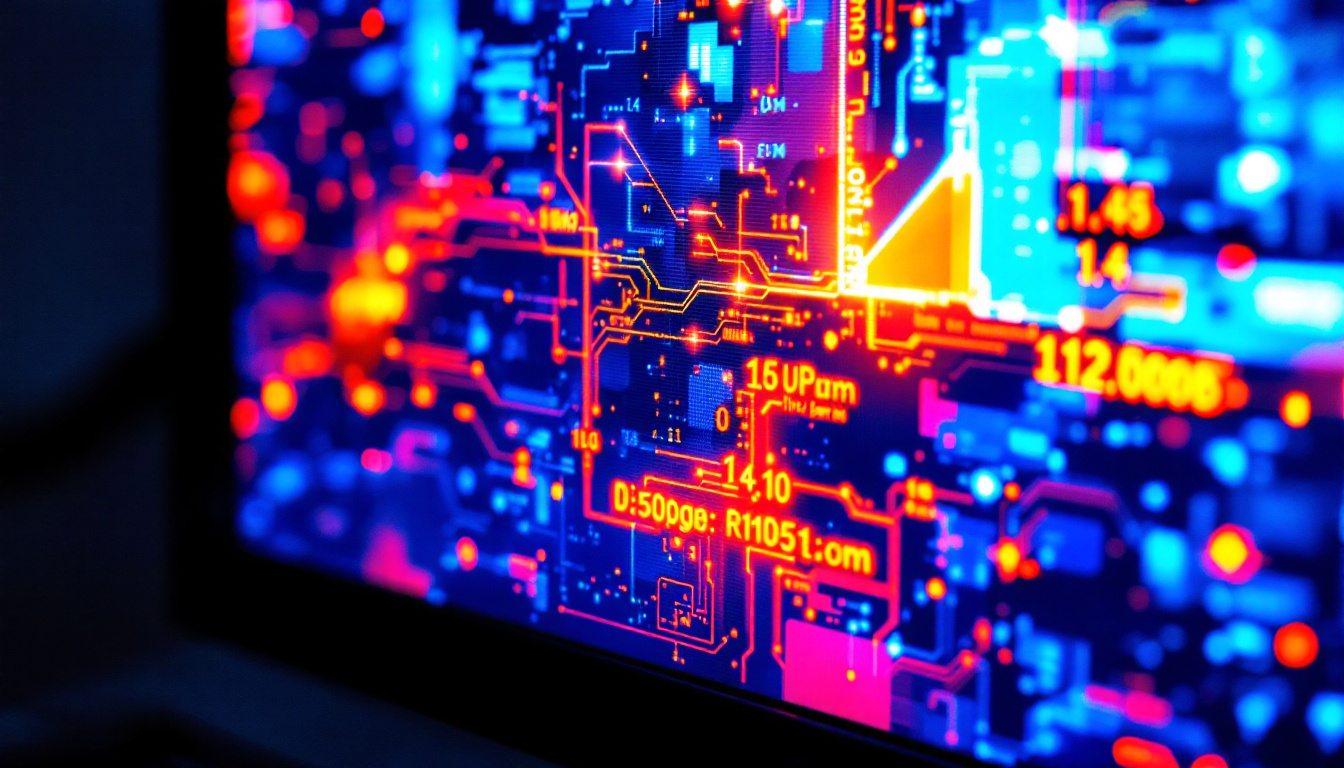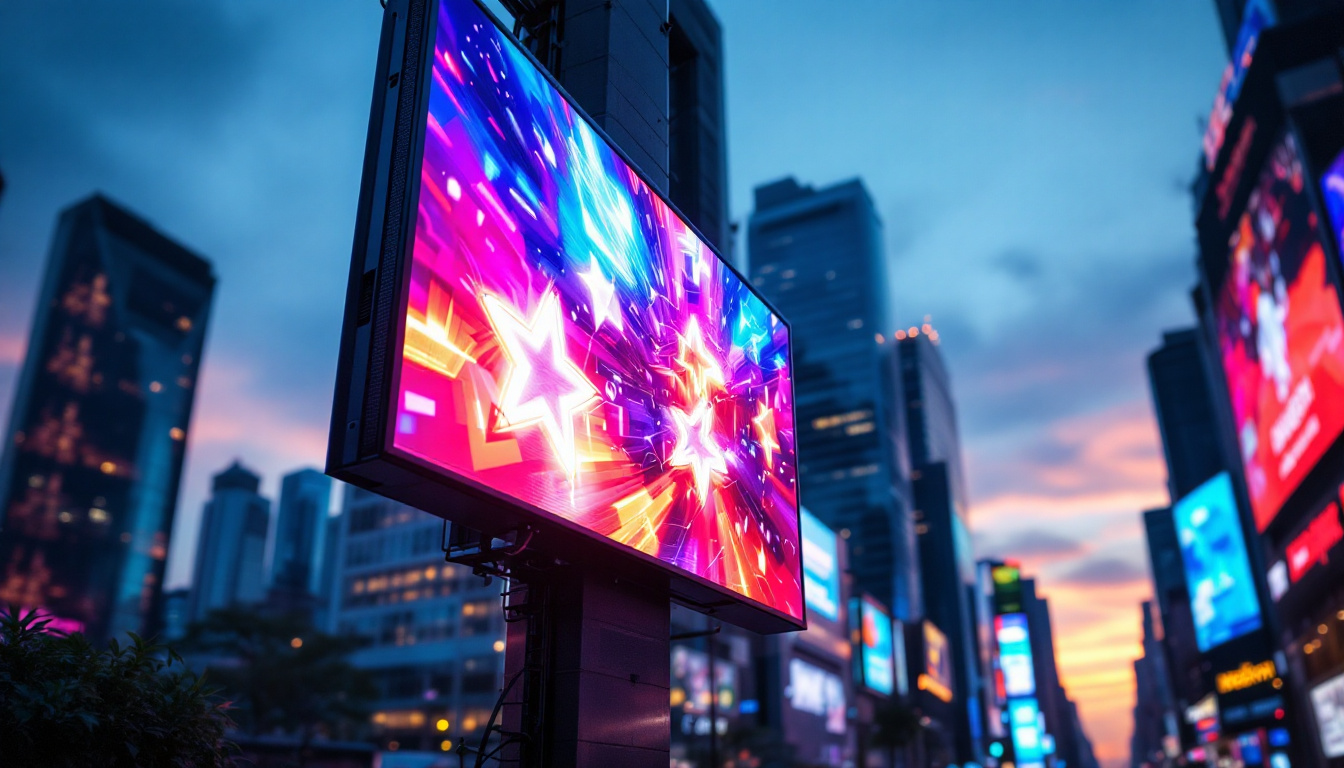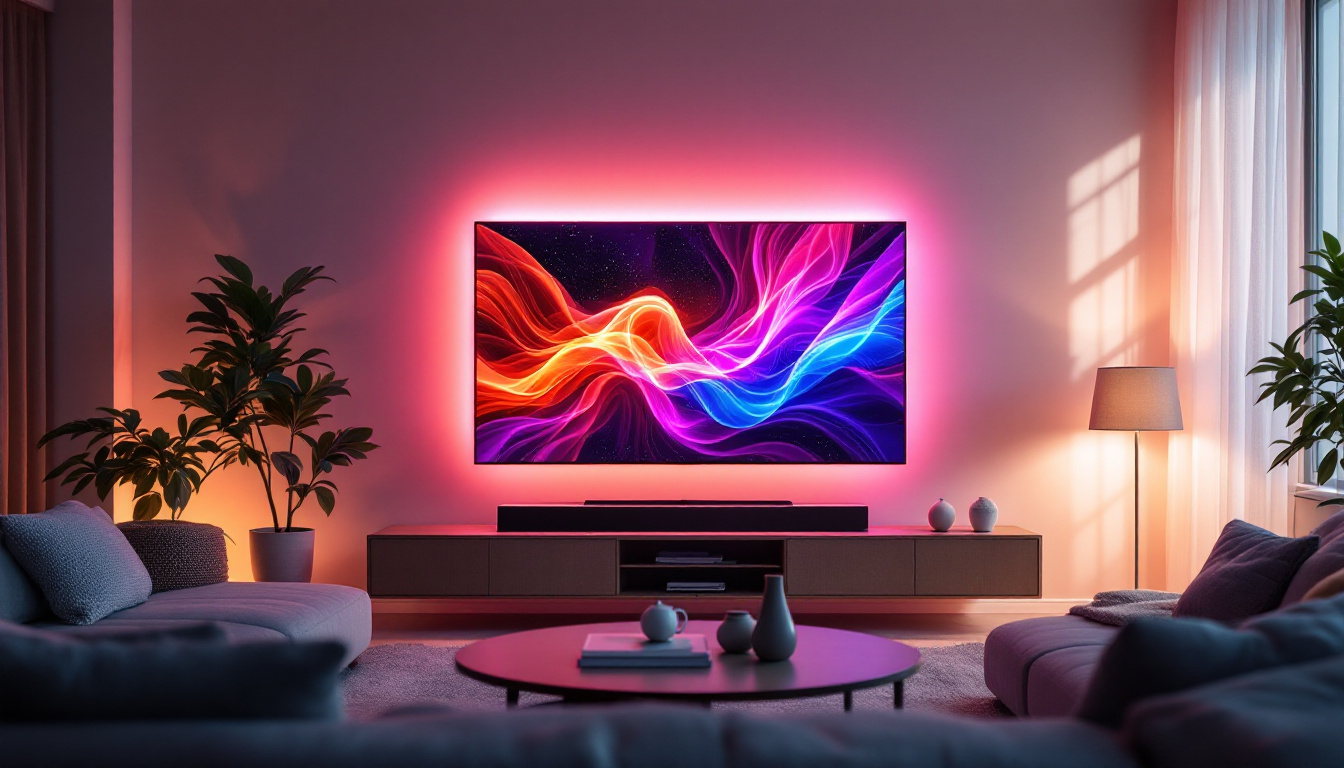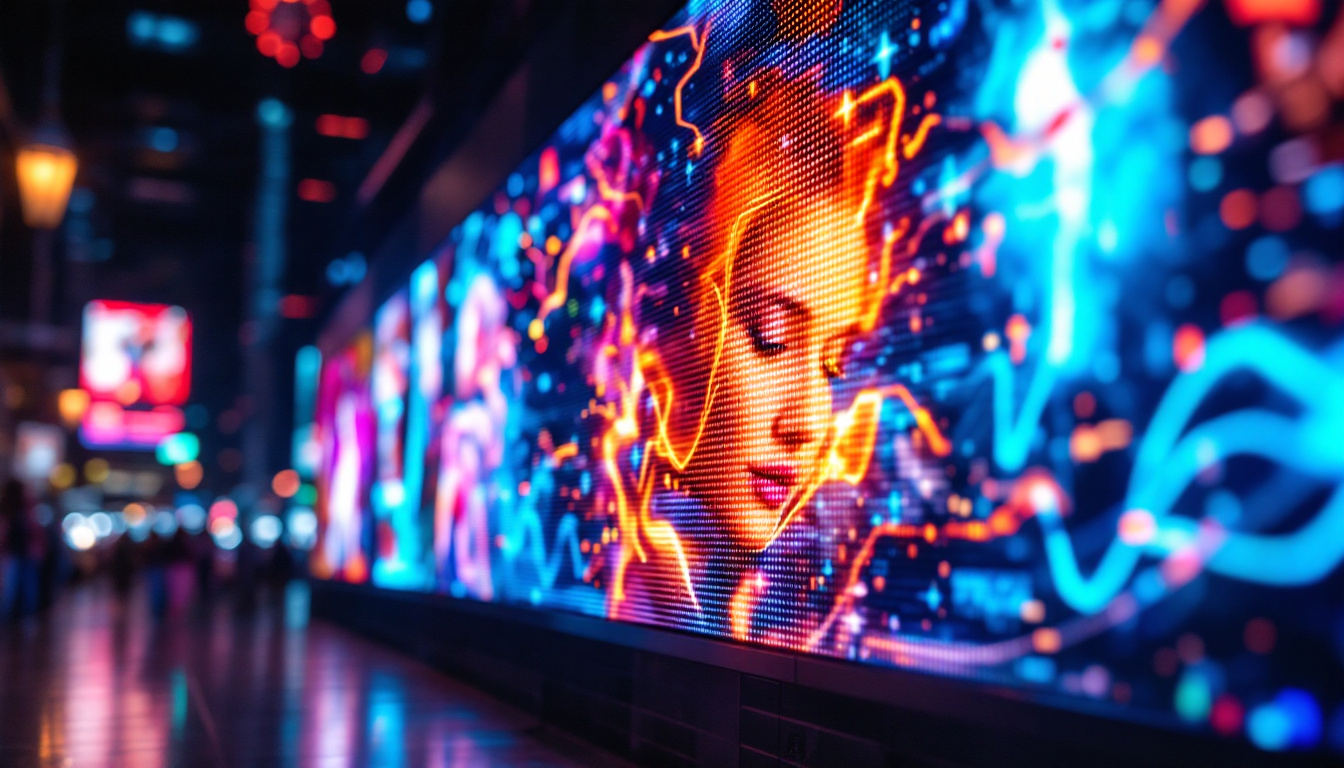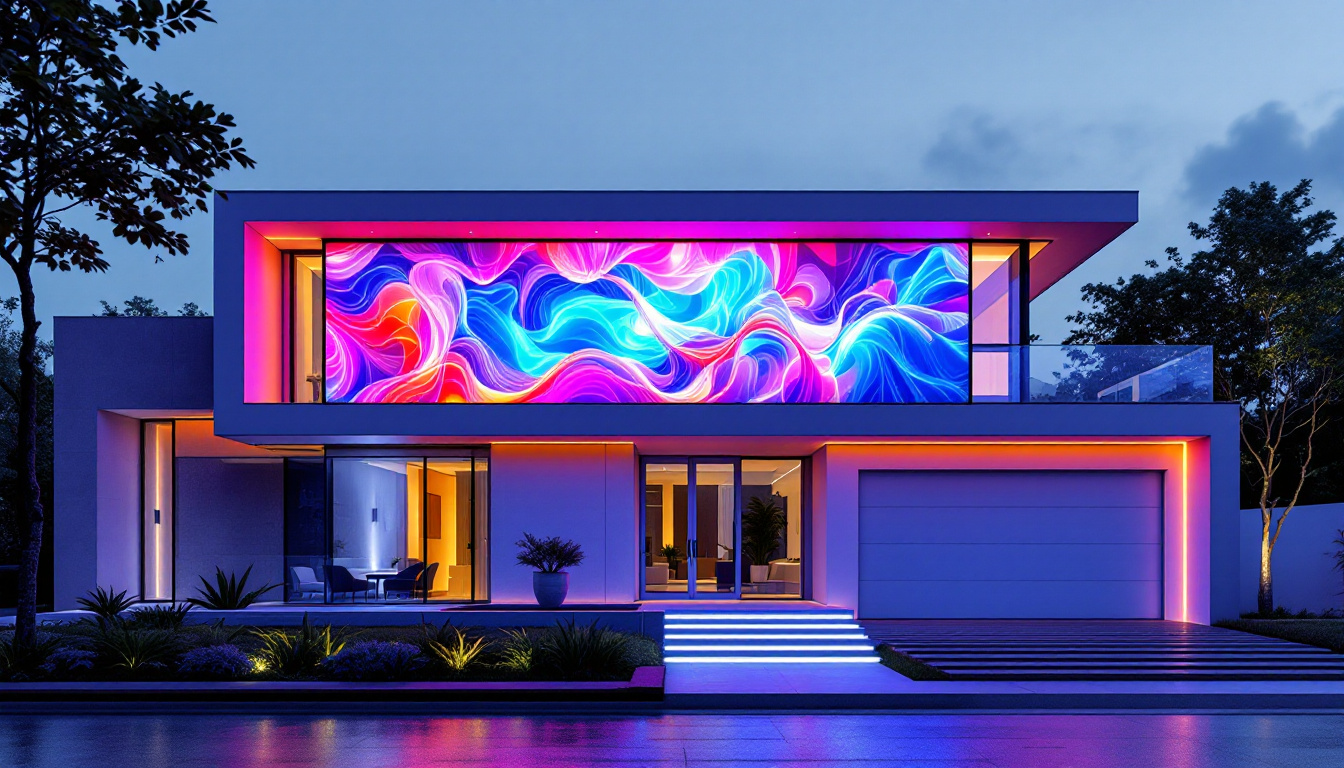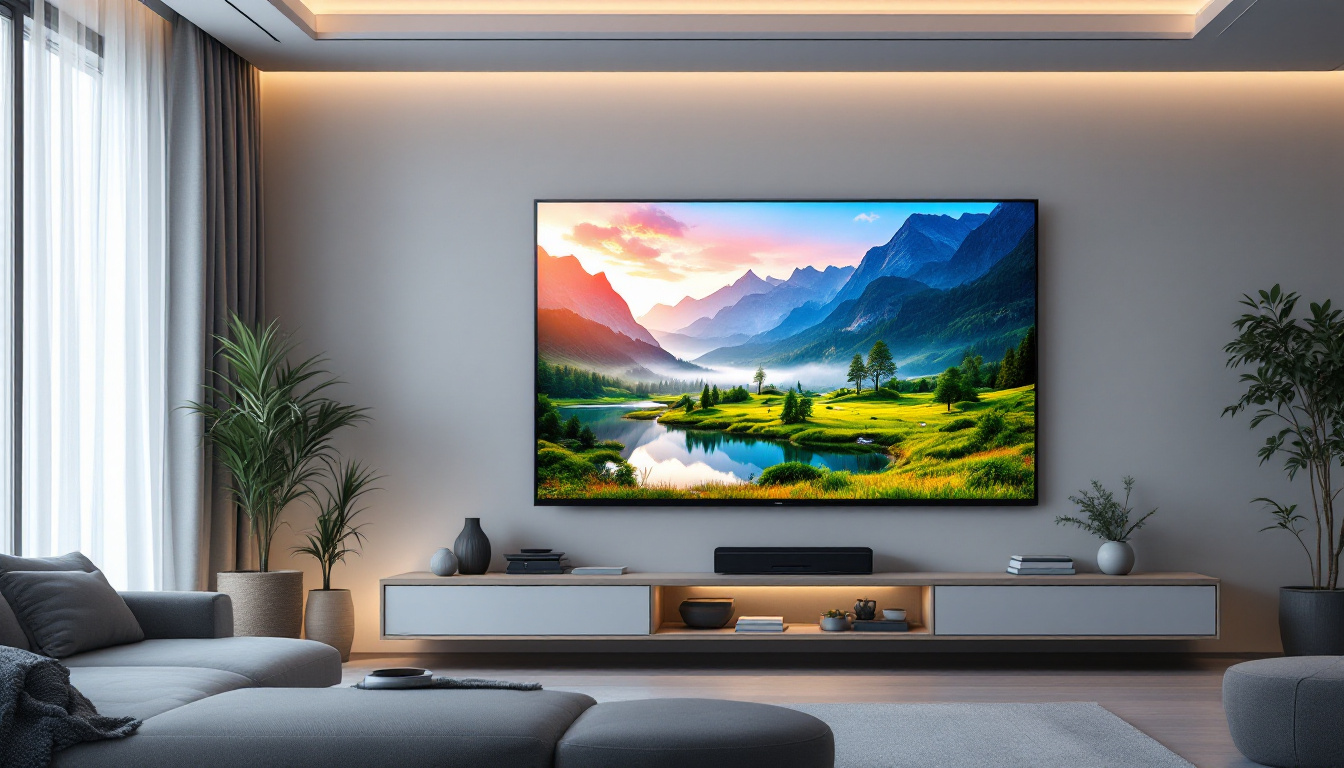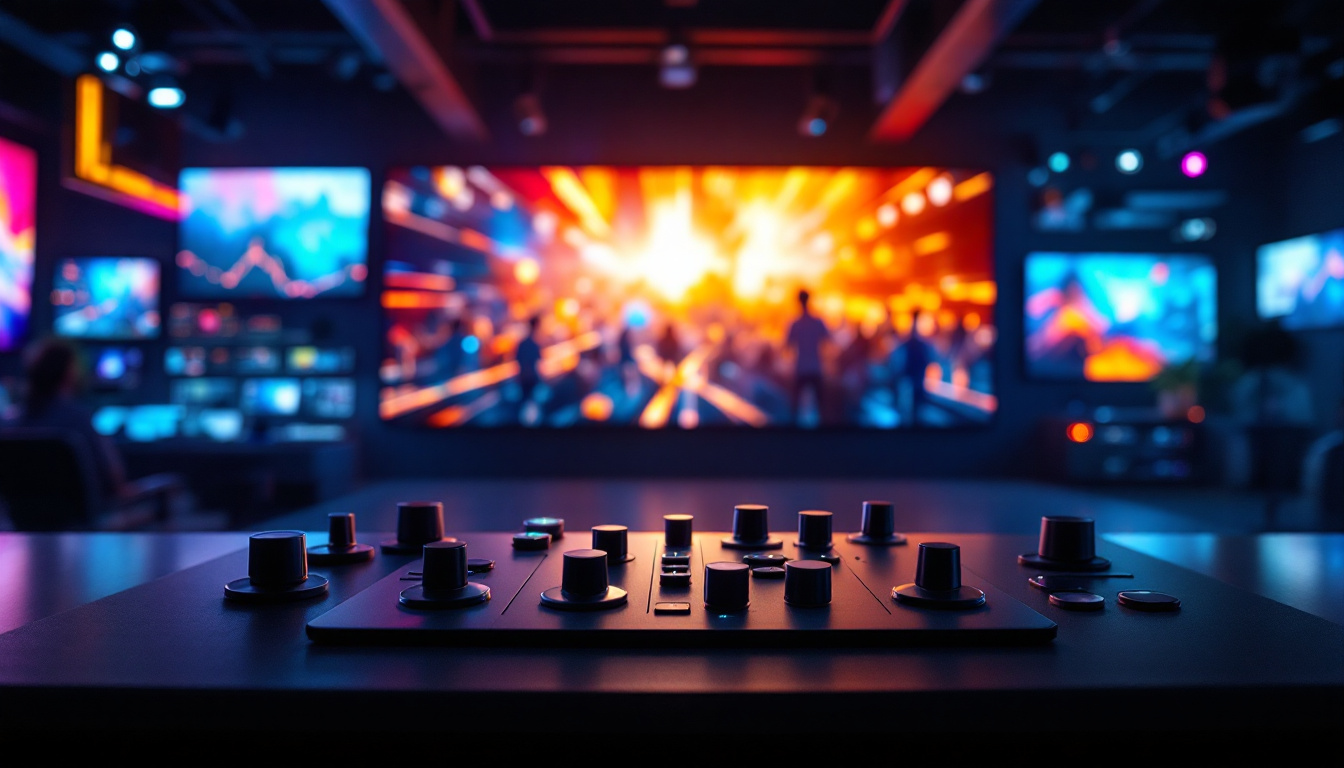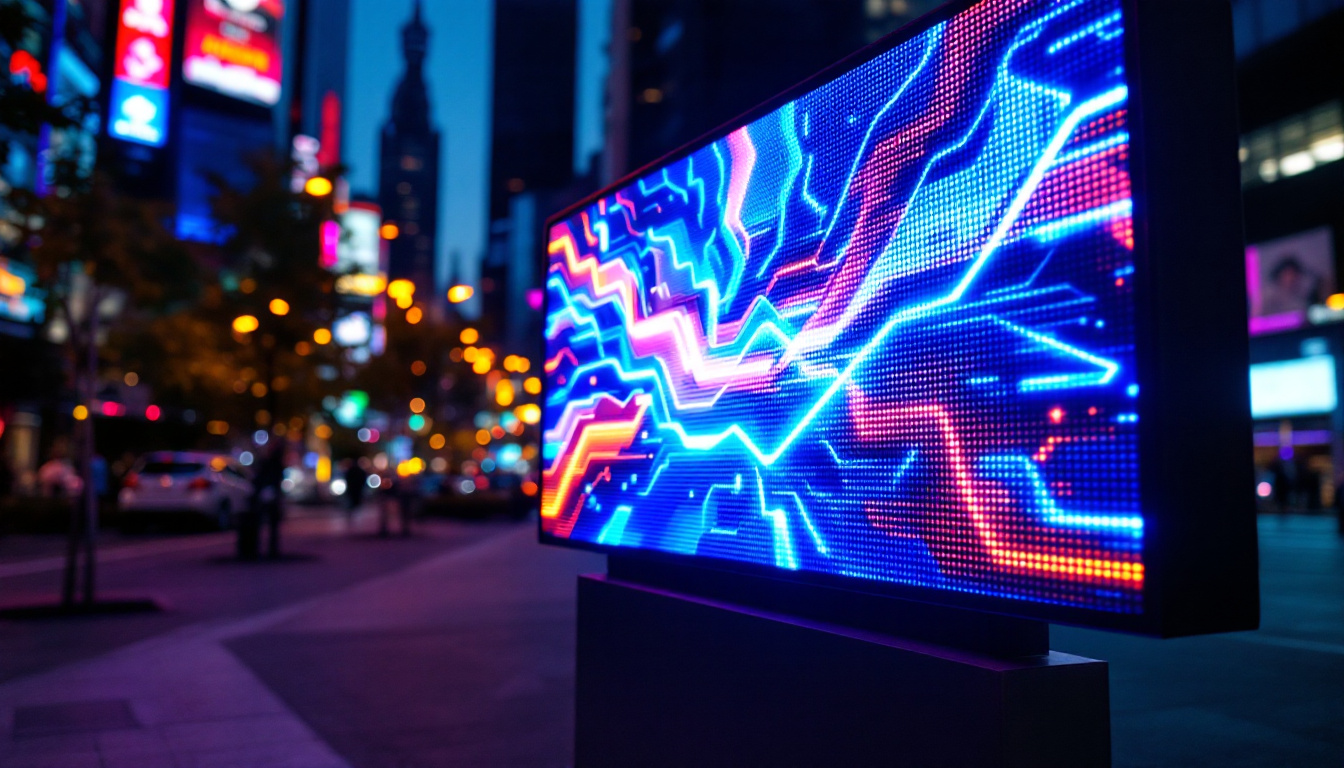In the modern world, desktop screens have become an integral part of daily life, whether for work, entertainment, or communication. Among the various types of displays available, LED (Light Emitting Diode) technology has gained significant popularity due to its numerous advantages. This article delves into the intricacies of LED displays, exploring their functionality, benefits, and applications in desktop screens.
Understanding LED Technology
LED technology is a method of producing light by passing an electric current through a semiconductor material. This process results in the emission of light, which can be used in various applications, including desktop screens. LED displays are known for their vibrant colors, energy efficiency, and thin profiles, making them a popular choice for consumers and businesses alike.
The Basics of LED Displays
LED displays utilize a matrix of tiny light-emitting diodes to create images and text. These diodes can produce a wide range of colors by adjusting the intensity of the red, green, and blue (RGB) components. By combining these colors in different proportions, an extensive palette can be achieved, allowing for high-quality visuals.
One of the key characteristics of LED displays is their ability to produce deep blacks and bright whites, enhancing the overall contrast of the images displayed. This is particularly important for tasks that require precise color reproduction, such as graphic design and photo editing.
Types of LED Displays
There are primarily two types of LED displays used in desktop screens: Direct LED and Edge LED. Direct LED displays feature an array of LEDs positioned directly behind the screen, providing uniform brightness across the entire display. This setup allows for better contrast and color accuracy.
On the other hand, Edge LED displays have LEDs positioned along the edges of the screen. Light is then diffused across the display using a light guide plate. While Edge LED displays are typically thinner and more energy-efficient, they may not offer the same level of brightness and contrast as their Direct LED counterparts.
Advantages of LED Displays
LED displays come with a host of advantages that make them a preferred choice for desktop screens. These benefits range from energy efficiency to superior image quality, catering to a wide array of user needs.
Energy Efficiency
One of the most significant advantages of LED displays is their energy efficiency. Compared to traditional LCD screens, LED displays consume less power, which can lead to lower electricity bills and a reduced carbon footprint. This is particularly beneficial for businesses that operate multiple screens, as the cumulative savings can be substantial.
Furthermore, LED technology generates less heat than other display technologies, contributing to a cooler working environment and reducing the need for additional cooling systems.
Superior Image Quality
LED displays are renowned for their exceptional image quality. With higher brightness levels, deeper blacks, and more vibrant colors, they provide an immersive viewing experience. This is especially important for professionals in creative fields, where accurate color representation is crucial.
Additionally, LED displays often feature faster response times, reducing motion blur during fast-paced activities such as gaming or video editing. This enhanced performance can significantly improve the overall user experience.
Longevity and Durability
Another notable advantage of LED displays is their longevity. LED technology typically boasts a lifespan of 30,000 to 50,000 hours, far surpassing traditional display technologies. This durability means that users can enjoy their screens for years without the need for frequent replacements.
Moreover, LED displays are generally more resistant to shock and vibration, making them suitable for a variety of environments, including those that may be less than ideal for traditional screens.
Applications of LED Displays
LED displays are versatile and can be found in various applications, ranging from personal use to commercial settings. Understanding these applications can help potential buyers make informed decisions when selecting a desktop screen.
Home Use
For home users, LED displays are ideal for a range of activities, including browsing the internet, streaming videos, and gaming. The vibrant colors and high contrast ratios enhance the viewing experience, making it enjoyable for entertainment purposes.
Additionally, many LED monitors come equipped with features such as blue light filters and flicker-free technology, which can reduce eye strain during prolonged use, making them a popular choice for those who spend long hours in front of a screen.
Professional Use
In professional settings, LED displays are commonly used in fields such as graphic design, video editing, and data analysis. The accurate color reproduction and high resolution provided by LED technology are essential for tasks that require precision.
Moreover, many LED displays support multiple input sources, allowing professionals to connect various devices simultaneously. This flexibility can enhance productivity, particularly in collaborative environments where multiple users need to share information quickly and efficiently.
Gaming and Entertainment
For gamers, LED displays offer an unparalleled experience. The fast response times and high refresh rates available in many LED monitors reduce lag and motion blur, providing a competitive edge in fast-paced gaming scenarios. Additionally, the vibrant colors and deep blacks enhance the overall gaming experience, immersing players in their virtual worlds.
Furthermore, many LED displays come with features specifically designed for gaming, such as adaptive sync technology, which helps eliminate screen tearing and stuttering, ensuring a smooth and enjoyable gaming experience.
Choosing the Right LED Display
When selecting an LED display for desktop use, several factors should be considered to ensure that the chosen screen meets individual needs and preferences. Understanding these factors can help users make an informed decision.
Screen Size and Resolution
The screen size and resolution are critical considerations when choosing an LED display. Larger screens can provide a more immersive experience, while higher resolutions, such as 4K, offer greater detail and clarity. Users should assess their workspace and determine the optimal size that fits comfortably without overwhelming the environment.
For professional tasks, a higher resolution is often recommended, as it allows for more screen real estate and better visibility of fine details. Gamers may also benefit from larger screens with high resolutions to enhance their gaming experience.
Refresh Rate and Response Time
The refresh rate and response time are essential specifications for users who engage in fast-paced activities, such as gaming or video editing. A higher refresh rate, typically measured in hertz (Hz), results in smoother motion and a more fluid experience.
Similarly, a lower response time, measured in milliseconds (ms), minimizes motion blur and ghosting effects, which can be detrimental during fast action sequences. Users should prioritize these specifications based on their intended use of the display.
Connectivity Options
Connectivity options are another crucial factor to consider when choosing an LED display. Many modern monitors come equipped with multiple ports, including HDMI, DisplayPort, and USB-C, allowing users to connect various devices seamlessly.
For those who plan to use their display with multiple devices, such as laptops, gaming consoles, and external storage, having a variety of connectivity options can enhance versatility and convenience.
Maintenance and Care for LED Displays
Proper maintenance and care can significantly extend the lifespan of an LED display. Users should be aware of best practices to keep their screens in optimal condition.
Cleaning the Screen
Regular cleaning is essential to maintain the clarity and performance of an LED display. Users should avoid using harsh chemicals or abrasive materials that can damage the screen. Instead, a microfiber cloth dampened with water or a specialized screen cleaner is recommended for safe cleaning.
It is advisable to turn off the display before cleaning to avoid any potential damage and to ensure that dust and smudges are easily removed. Gentle circular motions can help eliminate dirt without scratching the surface.
Adjusting Settings for Optimal Performance
Adjusting the display settings can enhance the viewing experience and reduce eye strain. Users should consider calibrating the brightness, contrast, and color settings to suit their preferences and the lighting conditions of their workspace.
Many LED displays also come with preset modes for different activities, such as gaming or reading, which can be beneficial for optimizing performance based on specific tasks.
Future Trends in LED Display Technology
As technology continues to evolve, the future of LED displays looks promising. Innovations in this field are likely to enhance performance, efficiency, and user experience.
Advancements in Display Technology
Future advancements may include improvements in resolution and refresh rates, with the potential for even higher definitions, such as 8K displays. These advancements will provide users with unparalleled clarity and detail, particularly beneficial for professional applications.
Additionally, developments in OLED (Organic Light Emitting Diode) technology may influence the LED market, offering even better color accuracy and contrast ratios. This could lead to a new generation of displays that cater to the most demanding users.
Increased Sustainability
As environmental concerns continue to rise, manufacturers are likely to focus on creating more sustainable LED displays. This could involve using eco-friendly materials and processes, as well as designing displays that are easier to recycle at the end of their lifespan.
Moreover, energy efficiency will remain a priority, with advancements aimed at reducing power consumption even further, contributing to a greener future for technology.
Conclusion
LED displays have revolutionized the way users interact with desktop screens, offering numerous advantages such as energy efficiency, superior image quality, and longevity. With a wide range of applications, from home use to professional settings, these displays cater to diverse needs and preferences.
When selecting an LED display, considering factors such as screen size, resolution, refresh rate, and connectivity options is crucial for making an informed decision. Proper maintenance and care can also extend the lifespan of these displays, ensuring optimal performance over time.
As technology continues to advance, the future of LED displays promises exciting developments that will enhance user experience and sustainability. Embracing these innovations will undoubtedly shape the way users engage with their desktop screens in the years to come.
Discover LumenMatrix’s Innovative LED Display Solutions
As you consider the future of your visual engagement, LumenMatrix stands at the forefront of LED display technology, ready to elevate your experience. Whether you’re looking to enhance your home entertainment, optimize your professional workspace, or captivate an audience in a commercial setting, LumenMatrix offers a comprehensive range of LED display solutions tailored to your needs. From Indoor and Outdoor LED Wall Displays to specialized options like Vehicle, Sports, and Floor LED Displays, our mission is to revolutionize your visual communication. Embrace the cutting-edge with LumenMatrix and create impactful, clear, and engaging messages. Check out LumenMatrix LED Display Solutions today and see the difference for yourself.

